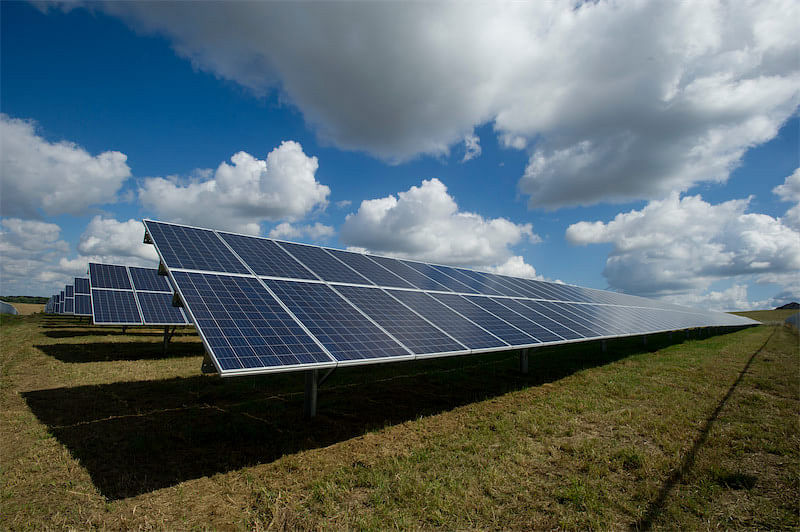
Apr 5th, 2023
Solar FAQ
Solar photovoltaic (PV) systems leverage the power of the sun to produce electrical energy, making solar power the purest, most abundant source of renewable energy on our planet.
Understanding Solar Photovoltaics
Solar photovoltaic (PV) systems leverage the power of the sun to produce electrical energy, making solar power the purest, most abundant source of renewable energy on our planet.
Applications of Solar Energy: Solar energy has a diverse range of applications. From generating electricity to lighting up spaces, creating comfortable indoor climates, or supplying heated water for business, or industrial purposes, solar technology is immensely versatile.
The Growth Trajectory of the Solar Industry
The adoption of solar power systems has seen a rapid surge in recent years. In fact, a new household is adopting solar energy nearly every 90 seconds! While transitioning to solar might seem daunting, at 93Energy, we simplify the process. Connect with us for a complimentary consultation to explore the possibilities.
The Concept of Solar Panels
Solar panels are specially designed to harness sunlight and transform it into energy for electricity production or heating. By capturing the sun’s energy, they generate electricity for your business.
The Composition of Solar Panels
Our sun, a natural atomic furnace, emits small energy particles known as photons. These photons journey 93 million miles from the sun to Earth in approximately 8.5 minutes. In one hour, our planet receives enough photons to theoretically fulfill global energy requirements for an entire year.
When a solar cell is hit by photons, they detach from their atoms. If conductors are linked to the positive and negative ends of the cell, it completes an electrical circuit. As electrons course through this circuit, they produce electricity.
A solar panel is composed of multiple cells, and numerous panels (or modules) can be linked together to form a solar array. Therefore, deploying more panels means generating more energy for your business!
Components of A Solar Panel
Solar panels aren’t solely about the cells. They are manufactured using six key components. Here's an overview of what a typical solar panel includes:
1) Silicon Solar Cells
2) Bus Wire
3) Plexiglass
4) Standard 12V Wire
5) Metallic Frame
6) Glass Sheet for Casing
Beyond solar cells, a conventional solar panel incorporates a glass casing to add resilience and safeguard the silicon PV. Beneath the glass exterior, there's insulation and a protective back sheet to reduce heat loss and moisture inside the panel.
This insulation is crucial as efficiency decreases with a rise in temperature, which lowers solar panel output. Consequently, an expert solar systems provider like 93Energy takes additional measures to capture light efficiently while avoiding overheating.
The Electricity Generation Process of Solar Panels
PV solar panels create direct current (DC) electricity, characterized by a unidirectional electron flow around a circuit. AC (alternating current) electricity, on the other hand, involves periodic electron reversals, much like the piston of a car engine.
Despite AC being the chosen type for the U.S. power grid, primarily due to its cost-effectiveness over long distances, solar panels produce DC electricity. This DC electricity is converted into AC using an inverter.
Role of A Solar Inverter
A solar inverter converts the DC electricity from the solar array into AC electricity. They function as the system's control center, providing ground fault protection, system statistics, and maximum power point tracking. Micro-inverters, unlike central inverters, optimize each solar panel individually, allowing every panel to operate at peak efficiency.
Why Should You Consider Solar Energy?
Adopting solar energy not only benefits the environment by reducing pollution and greenhouse gas emissions but also provides an inexhaustible source of power - the sun. As a clean and eco-friendly energy alternative, solar power significantly diminishes your carbon footprint.
By going solar, you're contributing to a sustainable future and demonstrating your commitment to environmental preservation. Solar power also minimizes electricity losses, enhances the security of the grid (reducing the risk of blackouts or brownouts for solar power users), and it's essentially free after the initial setup cost.
Not to mention, using solar energy is an integral part of the ongoing energy revolution. Imagine the power of harnessing an energy source that is not only plentiful and efficient but also contributes significantly to reducing carbon emissions.
The Benefits of Solar Energy
Besides being eco-friendly, solar energy also presents a myriad of benefits. It offers a substantial decrease in your energy bills, and you might even generate excess energy, which could be exported back to the grid.
If you have a solar PV system, your property could see an increase in value. As renewable energy becomes more popular, properties fitted with solar panel systems are in high demand.
Moreover, solar power allows us to reduce our dependence on non-renewable fossil fuels, making it a smart choice for energy independence. It requires minimal maintenance and once installed, you can enjoy free energy as long as the sun is shining!
Finally, solar energy solutions like those provided by 93Energy can be tailored to fit your specific needs. If you run a large commercial business, solar power can be a part of your sustainable future.
The Future of Solar Energy
With advancements in technology and an increased awareness of the need to switch to renewable energy sources, solar energy's future is promising. It plays a key role in the fight against climate change, promoting a cleaner and more sustainable planet.
Investing in solar energy is a step towards a greener, sustainable, and economically sound future. Get in touch with us at 93Energy to start your solar journey today!